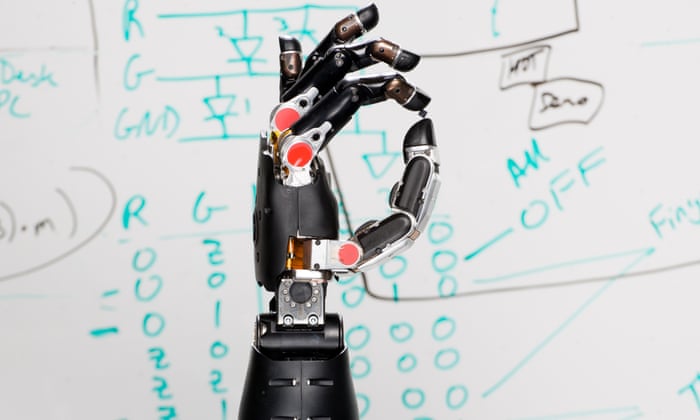
Credit: DARPA/The Guardian
Hands are not only mechanical devices, but sense organs too. Touch-sensitive nerve endings are more tightly packed in the fingers, particularly the ends of the fingers, than almost any other part of the body. These tightly packed nerve endings serve a number of purposes, but one of them is feedback (sense of touch) to allow an appropriate amount of force when gripping.
A good example is holding a grape. Feedback supplied by the sense of touch facilitates a controlled gripping force, which neither drops the grape, nor turns it into mush.
Now, touch has been added to a prosthetic robot hand.
http://www.theguardian.com/technology/2015/sep/14/robotic-hand-wired-directly-into-brain-feel-again-darpa / new advanced robotic hand wired directly into the brain successfully tested paralysed man feel hand developed Applied Physics Laboratory at Johns Hopkins university research project advanced replacement limbs funded US military Defense Advanced Research Projects Agency Darpa DARPA paralysed spinal-cord injury electrodes prosthetic hand sensory motor cortexes control hand thought sense fingers hand touched individually sensors hand detect pressure applied fingers create electrical signals mimic touch sensations blindfolded volunteer finger hand touched nearly 100% accuracy pressing one finger feelings perceiving robotic hand near-natural prosthetic limbs controlled by thoughts showing great promise feedback from signals brain level of control perform precise movements wiring a sense of touch mechanical hand directly into the brain potential seamless biotechnological restoration near-natural function completed the circuit hand neurotechnologies lost limbs gain fully functioning replacements level of control only be offered with sensation /